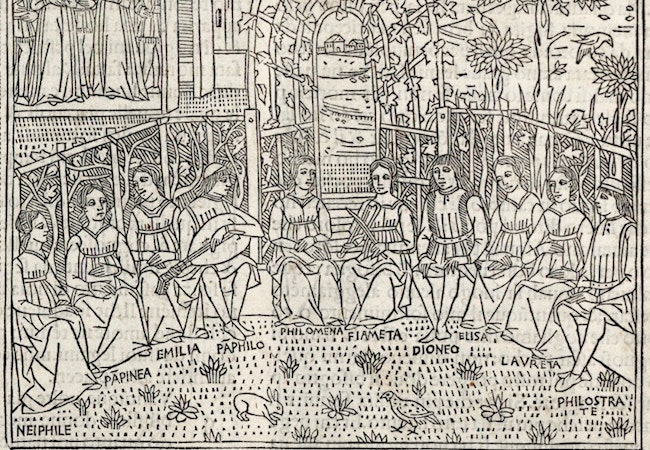How to make the most of teaching history online
August 12, 2020
An illustration from The Decameron, a collection of linked stories about young people sheltering outside Florence. Online learning can give students new ways to connect with old texts like this.
Penn GSE’s Abby Reisman co-created the Reading Like A Historian curriculum, and she is helping to lead a conversation about how history is taught and how lessons from the past can help students understand their world.
Reisman’s approach is based in having students engage with contemporary texts from the periods they are studying, training them to look for elements like the author’s perspective and biases, and discussing the texts in a meaningful way. This helps students develop critical thinking skills they can apply to their everyday lives.
Because of the pandemic, many teachers are reimagining how they will teach their classes online this fall. Virtual teaching presents challenges, but Reisman believes there are new ways for social studies teachers to get their students excited about history.
Reisman will lead a three-day virtual institute to prepare educators to teach document based history online, beginning August 17.
“Even if every school were meeting in person, social studies teachers would feel a real urgency to address contemporary events,” Reisman said. “There is a way to do that through historical inquiry because historical inquiry gives students a space to think deeply about the past and consider how it connects to and shapes the present.”
Use your expanded toolbox
This is a good time to experiment with new methods for helping students construct knowledge. You might not have as much time to lecture, but online tools give students more ways to explore a topic and show their work, while working at their own pace.
Students can build interactive timelines. They can create videos. Instead of writing an essay by themselves, students can record themselves debating a text or a critical event with their peers.
These are often the sorts of projects teachers find it difficult to assign as classwork in a traditional format, but they work well online.
Host a different kind of discussion
For starters, teachers have more ways to bring students into a discussion. Students who don’t like talking in class can have their voices heard in a chat, which the teacher or a student moderator can amplify.
Online discussions about historical texts can allow students to zero in on key passages in a way they might not have been able to in a classroom discussion because it’s so easy to share text on the screen, for the class to annotate together.
Don't change topics. Change questions.
Any moment in history has relevance to us today, if we ask the right questions about it. The questions you pose for your students to answer about an event will drive instruction, help your students see how that event shaped our world, and build a connection to the present and your student’s lived experiences.
With a pandemic, a presidential election, and renewed calls for social justice for Black Americans, many teachers rightly want their social studies lessons to have a sense of immediacy. Start by thinking about the questions you are asking.
For example, Reisman says that if she were teaching the Black Death last year, she likely would have used a lesson she wrote for the Stanford History Education Group focusing on how people believed that plague was transmitted.
This year, she might ask students whether people living through the plague in the 14th century felt as we do today, using a new lesson structure she designed for comparing past and present. She might have students read excerpts from The Decameron, a collection of linked stories about young people sheltering outside Florence.
“Whereas last year, we felt so far away from the 14th century,” Reisman says, “now, if we take a different lens, parts of it feel so close.”


